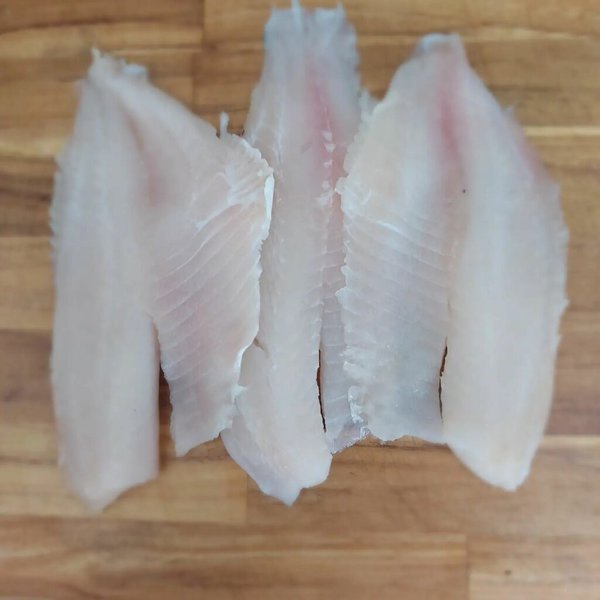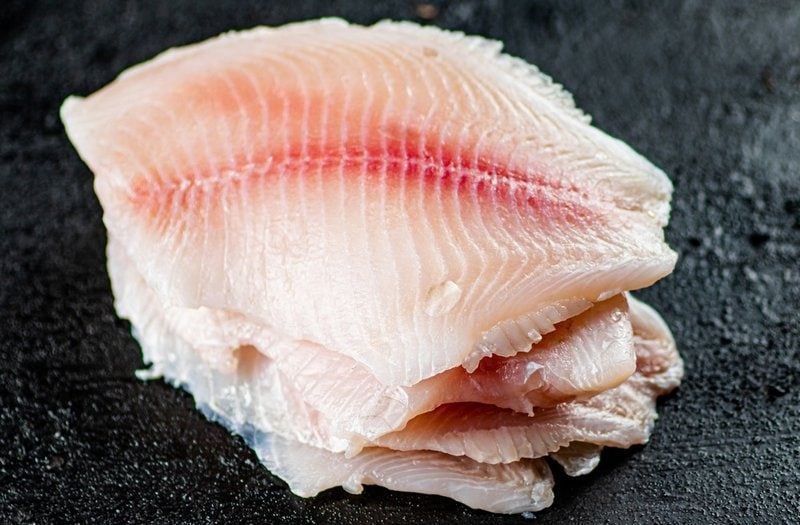It is a known fact that dogs can eat fish because canines are predominantly carnivorous animals. So, there is no doubt that they will enjoy the sumptuous taste of these aquatic creatures. However, what has always been controversial is the type of fish dogs can eat and how best to prepare it. These questions are necessary to consider to keep your four-legged friends healthy.
Yes, dogs can eat tilapia. Canines will enjoy loads of health benefits from eating tilapia. However, you should prepare the tilapia boneless so that the bones do not hurt your dog. You must also be aware of certain dangerous ingredients, like garlic or onions, to avoid while cooking for your canine.
Every dog owner should know what is healthy for their pooches and what can hurt them. Canines are incapable of taking care of their health, just like children. So, you need to understand the health implications of tilapia for your dog. Fortunately, this article provides valuable information regarding the dangers of feeding dogs tilapia and how best to avoid them. But first, let’s review why some dogs should avoid tilapia.
What Happens If Dogs Eat Tilapia?

Unlike whitefish, whiting, herring, and cod, tilapia ranks low among safe fishes for dogs. Yet, this does not mean your pooch will become sick from eating tilapia.
Can Dogs Be Allergic To Tilapia?
The list below includes fish that aren’t safe for dogs, according to the Food and Drug Administration (FDA).
- Albacore tuna (canned)
- King mackerel
- Shark
- Swordfish
- Tilefish
Though tilapia isn’t on the list, it isn’t necessarily safe for your pooch. Some dogs are allergic to fish. Of course, this is rare, but it happens. So, some dogs react negatively after eating tilapia because of allergies.
Some fish allergy symptoms in dogs include stomach upset, gastrointestinal issues, itchy skin, and diarrhea. So, when introducing tilapia to your dog’s diet, carefully observe your dog’s reaction to eating a small amount. If you notice such adverse symptoms, avoid feeding your dog fish again.
Does Tilapia Have Mercury?
Fishes, such as shark, king mackerel, albacore tuna, swordfish, and tilefish, are harvested when they are older. This causes them to acquire unhealthy mercury levels. However, tilapia is not in this category. Thankfully, tilapia contains minimal levels of mercury and is healthy for most canines.
Food with excessive mercury is not safe for dogs. Therefore, you must consider the mercury in fish before feeding it to your pooch.
Food high in mercury, like fish, can cause mercury poisoning in dogs. This can damage your canine’s kidneys, nervous system, digestive tract, and cardiovascular system.
Tilapia is often farm-raised, making it unlikely to have any contact with pollution or become contaminated. Nonetheless, ensure that the fish you buy for your pooch is from industry-regulated areas. Do not trust products from places without industry regulations because they might contain excessive mercury.
Is Tilapia A Healthy Fish To Eat?
Tilapia is safe and healthy for dogs. It is even safe for pregnant pooches and puppies if you remove the bones and avoid adding unhealthy ingredients. Tilapia is not only delicious but also nutritious, with the nutrients below:
- Protein
- Vitamins
- Mineral
- Healthy fats and calories
Protein

Protein is essential to the health of dogs. This is because protein aids in the processes of building bone and muscle, healing tissues, balancing hormones, and digesting food, as well as transporting oxygen through the body. Tilapia has up to 0.8 ounce of protein per serving, proving itself as a rich source of protein.
Vitamins
Tilapia also contains vitamin B, which helps convert food to energy. It is also essential for the quick movement of oxygen and energy around the body. Another nutrient that has similar benefits is niacin. Interestingly, niacin is also in tilapia.
Minerals
Tilapia contains minerals such as phosphorus, selenium, and potassium. Phosphorus helps in tissue and cell repair and the absorption of nutrients. Selenium prevents cell damage and infection, while potassium helps maintain fluid levels inside dogs’ cells.
Fatty Acids
Tilapia has healthy fats, such as omega-3 fatty acids and omega-6 fats. Omega-3 supports your pooch’s cell membranes, boosting the immune system. Meanwhile, omega-6 ensures that dogs’ cholesterol level is healthy, which prevents diabetes.
How Much Tilapia Can A Dog Eat?

It is best to give tilapia to your dog only as a special treat. However, if your pooch needs a novel source of protein due to health conditions, tilapia can be part of your dog’s daily meal.
Can Dogs Eat Tilapia Skin?
Whether your dog can eat tilapia skin depends on how you prepare the fish. On the one hand, don’t allow your canine to eat tilapia skin if the fish is raw. Fish skin often harbors bacteria and parasites. Therefore, raw fish is unsafe for doggies because of the health complications it can cause.
On the other hand, you can feed cooked or dried fish to dogs. Yet, you must remove the tilapia’s surface scales. In addition, avoid adding seasonings or flavored oils during preparation. Also, remove the fins and tails, which can harm dogs.
Tilapia skin is chewy, so it can be difficult for dogs to properly chew and swallow. While eating tilapia skin, dogs risk swallowing a large chuck that can lodge in their throat and possibly choke them.
The choking risk is higher for canines since they often rush when eating. Young dogs are most at risk. However, if you consider these potential problems and handle them appropriately, there is no cause for alarm. The major concern when feeding tilapia to dogs is the level of preparation.
If you are patient enough to adequately prepare tilapia such that it becomes safe for your pooch, you can feed tilapia to dogs without them having to develop health problems.
Can Dogs Eat Raw Tilapia?
The American Veterinary Medical Association recommends not feeding dogs raw fish or undercooked fish. Even though most doggies aren’t picky and may happily chow down on raw fish, it isn’t safe.
When raw or undercooked, tilapia can potentially hurt your dog. The potential parasites in raw tilapia’s internal organs, muscle tissues, and skin may pose a real danger to dogs. So, the chances are high that dogs may experience stomach upset or distress after consuming raw tilapia.
Some potential parasites in raw fish are Salmonella, Listeria, and Clostridium. These bacteria will lead to poisoning. They not only hurt dogs but also negatively impact human health. Therefore, do not allow canines to eat undercooked or raw fish to avoid health issues.
Can Dogs Eat Tilapia Bones?
As tilapia fins and tails are dangerous for dogs, so are their bones. Though bones contain nutrients such as calcium, dogs cannot adequately digest them. Tilapia bones can cause physical injury to your pooch or aggravate an existing injury. So, always debone fish before feeding it to your furry friend.
Bone fragments can penetrate dogs’ digestive tracts. This is dangerous for several reasons. First, the bone pieces could move to the organs around the digestive tract and soft tissues after penetrating the stomach walls. The bones can then perforate tissues and organs, causing internal bleeding.
Second, fish bones are small and pointed, creating a choking hazard. If a small bone becomes lodged in a dog’s throat or mouth, the dog may paw at their face or drool excessively.
So, do not allow your dog to eat tilapia fish unless it has been deboned. This will spare your pooch considerable pain and save you serious money by avoiding the surgical operations required to heal your canine. So, the risk is never worth taking.
How Do I Cook Tilapia For Dogs?
Since preparation is the most vital aspect to consider when feeding dogs tilapia, we’ll cover it in more detail in this section.
Can Dogs Eat Frozen Tilapia?
There is little difference in nutritional content between fresh and frozen tilapia. However, there are some health benefits to freezing tilapia. For instance, freezing tilapia fish better preserves it for future consumption. It also reduces the risk of your dog eating harmful bacteria.
Moreover, freezing reduces the impacts of cancer-causing contaminants usually present in farm-raised fishes, such as tilapia. Nonetheless, it is always best to still cook fish that has been frozen. Freezing fish does not exempt you from thoroughly cooking it to prevent harm to your canine pal.
Freezing reduces the chances of parasites; it doesn’t entirely eliminate the risk. So, even if the fish is frozen, cook it before feeding your canine. Also, always remove the fish’s bones, fins, tails, and skin before feeding your furry friend.
We also recommend removing the head because it is hard and full of bones. Your dog will struggle to eat and digest it, increasing the choking risk.
Can Dogs Eat Fried Tilapia?

Fried tilapia is not safe for your pooch, with or without spices. So, it is best to avoid frying. While fried tilapia is delicious, fried foods can cause various health problems for dogs. The high fat from the butter or oil used for frying can upset your canine’s stomach.
Even when you avoid frying with oils or seasonings, fried fish can still harm dogs. So baking or steaming are the safest ways to cook tilapia for dogs. These methods help preserve the fish’s nutrients and ensure it is safe for your pooch.
Also, avoid cooking with ingredients such as garlic and onions, which are toxic for our four-legged friends. Interestingly, every part of the onion is unhealthy for dogs. Even when you steam or fry onions, it still has the potential to hurt dogs. So, it is best to avoid onions in every form.
Unlike people, dogs can’t digest garlic and onions. The poisoning will not be severe if your dog eats a small amount of onions or garlic. However, excessive exposure to garlic and onions can be fatal for dogs, especially without urgent medical help.
Even if your pooch does not show immediate symptoms after eating onions and garlic, it is best to see your vet immediately.





